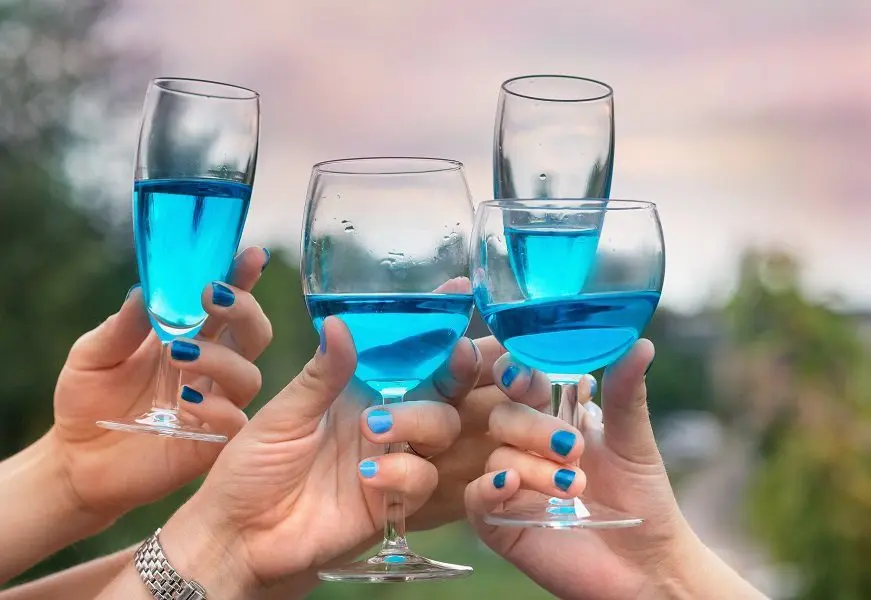Contents
In 2015, the Spanish company Gik released the world’s first blue wine (11.5% ABV), and at first it made an unprecedented sensation. Unusual blue wine flashed everywhere: in print media, blogs, social networks, and the manufacturer quickly arranged deliveries to 25 countries around the world. True, it turned out that the non-standard shade is almost the only advantage of the drink, since the taste and aroma are mediocre.
In testing, the tasters described the blue wine as “unimpressive” at best, but even the definition of “disgusting” was found among the reviews. In addition, Gik violated European rules by calling its product “wine”, and the sale of products became difficult.

The problem is that the blend of white and red wine became the basis of the drink, and the addition of anthocyanin and indigotin dye gave it a blue color. The last ingredient has become a stumbling block: the EU does not allow the content of any dyes, flavors, etc. in wine. Such a product may be referred to only as an “alcoholic beverage”, or it may be designated by its own name. Moreover, the manufacturer added an artificial sweetener to the drink, due to which the wine became truly cloying. Gik recommends chilling the blue novelty before serving and serving it with Mexican guacamole, pasta and sushi.
French entrepreneur René Le Bail took into account the mistakes of his Spanish predecessors and created a blue wine called Vindigo (wine + indigo). This drink is made on the basis of 100% Chardonnay, and to give the alcohol a blue tint, it is passed through a pulp of anthocyanin-rich red grape skins. The result is a sweet, medium-bodied wine that fully complies with European legislation.

Windigo has a strength of 11%, it has a fruity taste, notes of cherries, blueberries, passion fruit are felt in the bouquet. The drink is distributed throughout Europe. The manufacturer recommends serving it with oysters and other seafood.
Позиционирование
Blue wine producers position their product as a revolutionary new product designed to stir up the traditional and “snobby” world of “noble” alcohol. Innovative winemakers argue that wine can be an attribute not only of social events, but also of fashionable parties, and directly declare that the main audience for their development is young people and women.
Criticism
Professional tasters took the new drink critically. The American newspaper Independent argues that blue wine is only suitable for spectacular photos on Instagram and is popular only among the generation of millennials, who generally have difficulty growing up. In the article BLUE WINE IS A THING – AND PEOPLE ARE CONFUSED (“Blue wine is something, people are confused”), the journalist calls the product a “caricature”, “a hyped mouthwash” and notes that manufacturers of a fashionable drink there is no winemaking experience, and Gik does not even have a real office, only a virtual one.

The almost unanimous verdict is that blue wine is good for pretty photos and perhaps as a cocktail ingredient. The drink turned out to be extremely sweet, but for the category of dessert wines, it lacks body and aftertaste.









